| Entrance | History | Principles | Trainer | Training | Rules | FAQ | Links | Galleries |
| The History of Aikido
Copyright © 2001 Friedrich Kemler |
| Daitôryû | |
 |
The roots of Aikidô are to be traced to the martial tradition of the Daitôryû. Shinra Saburo Minamoto no Yoshimitsu [1045-1127] is said to be the founder of this tradition. His art was based on Tegoi, an archaic martial art traced back to the gods Takemikazuchinokami and Takeminakatanokami. Tegoi is also the mother art of Sumo.
After having accumulated a wealth of martial experience, he retreated to Onjôji temple.There, after practicing tantric Buddhism for several years, he established the principles of Daitôryû. The name is derived from the name of his former mansion which means "great east". Minamotos successors carried the tradition to Kai, the present Yamanashi prefecture. There it was absorbed into the martial curriculum of the Takeda family. After the defeat of Takeda Shingen in 1573 Kunitsugu, a distant relative of Shingen, found his way to Aizu. He was welcomed with the position of an advisor to the lord Hoshina Masayuki [1611-1673]. In Aizu the art of Daitôryû was taught to high ranking samurai and noble women as a means of self defense until the late eighteenth century. |
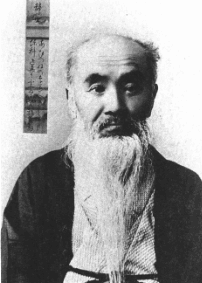 |
| Saigô Tanomo | |
 |
Saigô Tanomo [1830-1903] was an advisor to the lords of Aizu. In Japan he is regarded as an important scholar, renowned for his open mindedness. Fitting his position he also was a master of Oshikiuchi. At that time Oshikiuchi was another name for Daitôryû.
Aizu, situated in the northern part of the main island Honshû, was known as a treasure of samurai arts. Opposing the path of modernization initiated by the Meiji government, the Aizu retainers took part in the Satsuma Rebellion. The revolt ended in utter defeat. Tanomo himself was taken prisoner, but soon pardoned with regard to his fame as a scholar. He continued his life as a Shintô priest at Tsutsukowake shrine located in Fukushima. The transmission of the Daitôryû's secrets onward into the 20th century is solely Saigô Tanomo's merit. He passed them on to two persons: To Saigô Shirô, his adopted son, and to Takeda Sôkaku, the son oft the Aizu retainer Takeda Sôkichi. |
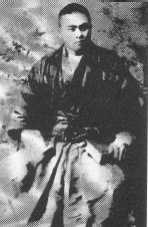 |
| Saigô Shirô | |
 |
Saigô Shirô [1866-1922], the adopted son of Saigô Tanomo is a famous person in Japan. He was one of the four fighters successfully establishing Kanô Jigorôs Kôdôkan Jûdô as the standard of Jûdô against the older styles of Jûjutsu. His special technique Yamaarashi is said to be derived from Rokkajô, one of Daitôryûs basic techniques.
The life of Saigô Shirô is the topic of the three tome novel Sugata Sanshirô by Tomita Tsuneo. The book was brought to the silver screen by the master of Japanese cinema himself, Kurosawa Akira. The English title was "Judo Saga". This film represented Kurosawa's debut. Two years later he directed a sequel. In his mature years Saigô Shirô left the stage of Jûdô as well as Daitôryû and lived in Kyûshû as a teacher, reveling in the art of Kyûdô. |
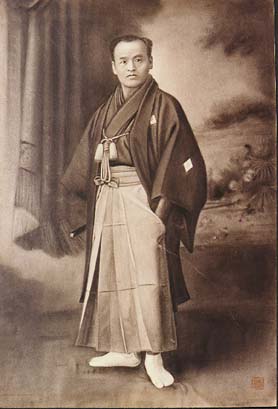 |
| Takeda Sôkaku | |
 |
From his youth Takeda Sôkaku's [1859-1943] great passion were the martial arts. As a boy he was taught Ittô Ryû, a style of swordsmanship that resembled the base of the martial arts education of Aizu's samurai. There is a strong relationship between Ittô Ryû and Daitôryû. In the transmission scripts of the Ittô Ryû one already finds a detailed explanation regarding the concept of Aiki. Later he learned the art of Jikishinkage Ryû with Sakakibara Kenkichi, a sword art with strong inclination to the spiritual, and of course Daitôryû with his father and Saigô Tanomo.
Already being proficient in several martial arts, he spent a lot of time travelling around the country, challenging masters of other traditions and deepening his martial knowledge. Further on he started teaching his personal brand of Daitôryû in a broad manner. His pupils numbered in thousands. They were drawn mostly from groups of higher social status such as martial arts masters or high ranking army officers and politicians. Takeda Sôkaku is a pure example of the one hundred percent effective fighter. He missed no opportunity to test his ability and remained undefeated. His art resembles the base for the technical efficiency of Aikidô. |
| Deguchi Ônisaburô | |
 |
The teachings of Ômoto Kyô bear a strong influence on the spiritual content of Aikidô. Ômoto Kyô is one of the so-called new religions in Japan. The cult was founded by Deguchi Nao [1837-1919] after an experiencing enlightenment in 1892. Her son-in-law Deguchi Ônisaburô [1871-1948] took over leadership after her death and successfully spreaded Ômoto Kyôs teachings throughout Japan.
Ômoto Kyô's aim lies in establishing a community based on humanistic and religious principles. Ecological farming is considered as the communitie's economic foundation. The spiritual base of Ômoto Kyô's teachings is drawn from Kotodama, a Shintoist system of thought based on tones and syllables and Chinkon Kishin, a system of Shintoist meditation and purification exercises. Chinkon Kishin was assembled into a consistent system by Honda Chikaatsu, an avid researcher of old Shinto scriptures. The basic ideas were drawn from a Shinto centered science of mind. |
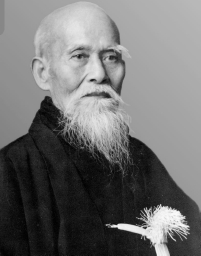 |
| Ueshiba Morihei | |
 |
Ueshiba Morihei [1883-1969] is the person who managed to merge the essence of this traditions in a marvelous way. From childhood he was enthusiastic about martial arts as well as religion. He was born in Tanabe at the western coast of Kii peninsula, which is situated in the south of Kyoto. The mountainous region of Kii was a treasure of different religious traditions throughout all ages. Hiking these mountains one meets Shintô as well as Shingon priests (Shingon is a brand of tantric Buddhism). A further group roaming the narrow paths are Shûgenja, mountain ascetics with shamanistic and religious background.
After studying different forms of sword-, spear- and body arts and finally meeting Takeda Sôkaku, he reached a breakthrough in his understanding of martial arts. He became Sôkaku's devoted student and finally developed his personal style of Daitôryû. Deguchi Ônisaburô was his friend and mentor. Morihei integrated the teachings of Ômoto Kyô into his own style and called the system Aikidô, the way of harmony. The meaning of Aiki in the martial arts is sensing the rhythm of an attack, and using it for defense. On a psychological level Aiki is synonymous for empathy, receptivity for other person's feelings. On a spiritual level Aiki or Takemusuaiki means the union with all beings, nature, the whole cosmos. This kind of union is the goal of most spiritual traditions. The term Yoga essentially bears the same meaning. Ueshiba Morihei henceforth spent his life disseminating the way of Aikidô with never receding enthusiasm. His pupils carried the way into the world. |
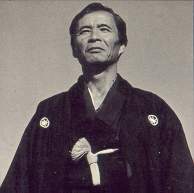 |
| Tamura Nobuyoshi | |
 |
Tamura Nobuyoshi [1933-2010] was appointed official representative of the Aikikai for Europe in 1964. He was an Uchideshi (life in student) of Ueshiba Morihei and served as his Uke on many occasions. After relocating to France he bore the most significant impact on European Aikido and was responsible for the development of Austrian Aikido. |
| Entrance | History | Principles | Trainer | Training | Rules | FAQ | Links | Galleries |